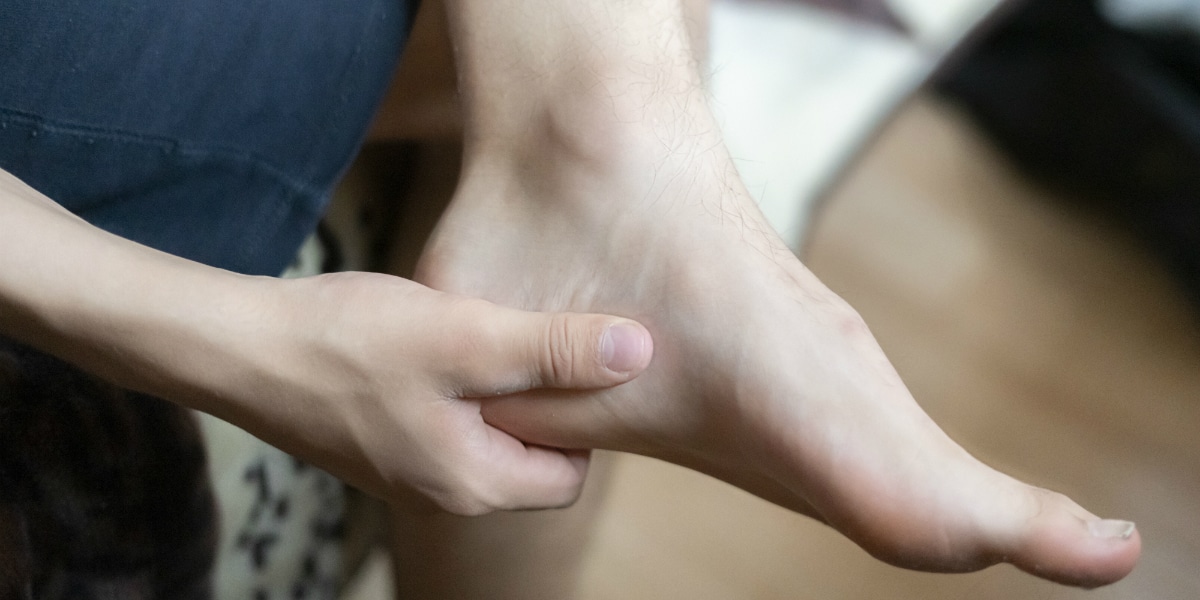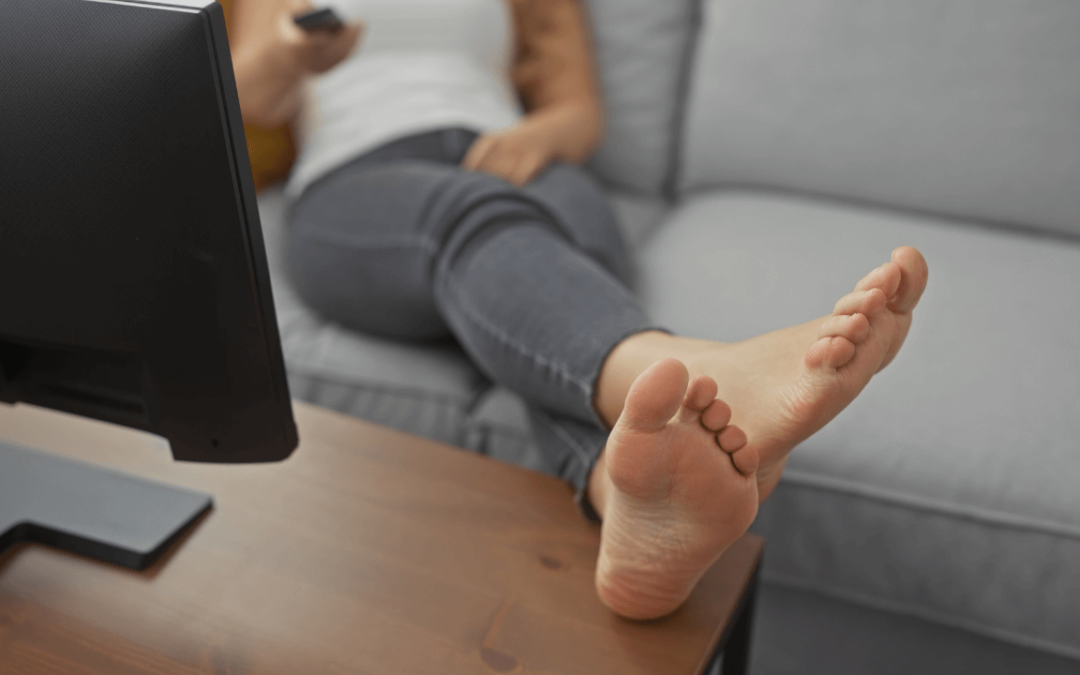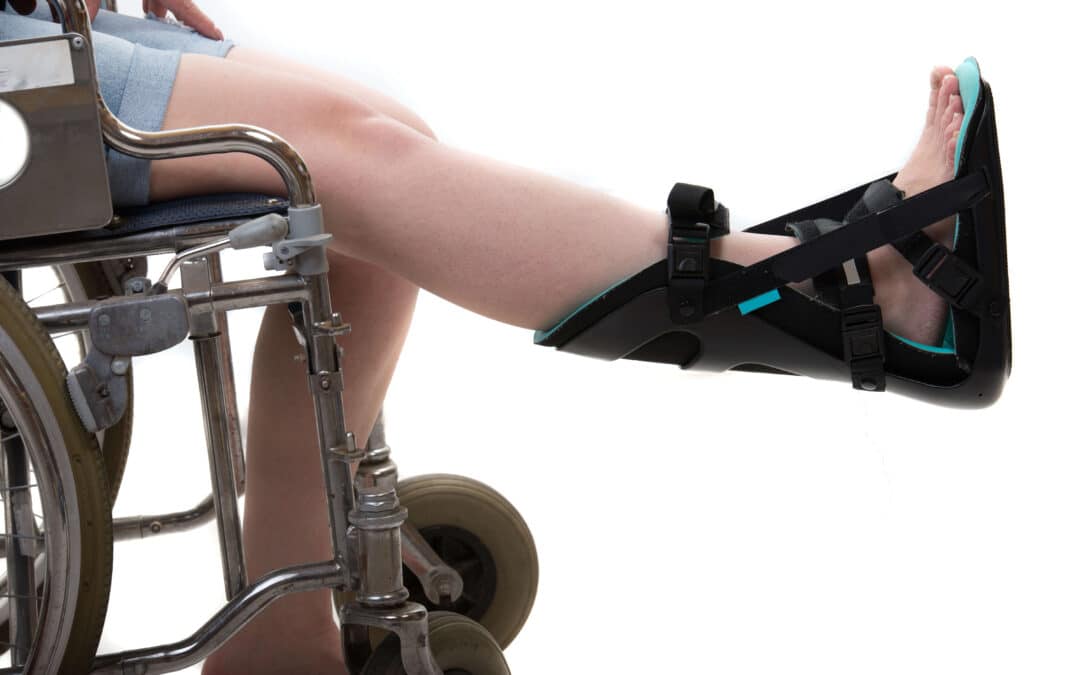Heel pain. How complicated could it be?
Actually, a lot more complicated than you might realize!
From what can cause it (and what usually doesn’t), to who can get it, to how it’s treated, there may be a lot you don’t know about heel pain.
Fortunately, we’re here to help you fill in the gaps. So without further ado, here are 5 things you (probably) didn’t know about heel pain.
There’s No Single Condition Out There Called “Heel Pain”
Heel pain is a symptom, not a condition.
In fact, if heel pain is your primary symptom, there are several different possibilities for what the diagnosed condition may be. Some of the most common ones we see at our practice from our adult patients include:
- Plantar fasciitis. This condition is characterized by pain on the underside of the heel, which is especially noticeable when getting up from bed or a long period of time in a seated position. It’s caused by stretching and tearing in the plantar fascia, a ligament-like band of tissue that runs across the bottom of your foot and supports your arch.
- Achilles tendinitis. If your pain is located along the back of your heel, right where the Achilles tendon (also known as the heel cord) inserts into the heel bone (or a little bit above it), Achilles tendinitis is the most likely culprit. Distance runners and “weekend warriors” are especially likely to develop this condition, which is usually marked by stiffness and pain that worsens during and after activity.
- Achilles bursitis. Without a professional evaluation, this condition is very hard to distinguish from Achilles tendinitis, since the symptoms are extremely similar. Basically, instead of the tendon being damaged, the bursa sac located between the tendon and the heel bone is inflamed. Bursae are normally supposed to help your joints move smoothly.
- Tarsal tunnel syndrome. Are you familiar with carpal tunnel syndrome of the wrist and hand? This is the same basic idea, except in the ankle and foot. Important nerves need to pass through a tight “tunnel” in the ankle in order to reach the foot, and certain injuries or repetitive motions can cause them to get pinched or blocked. “Radiating” heel pain is a common result.
Other possible diagnoses include stress fractures, peripheral neuropathy, bruising, and rheumatoid arthritis (RA).
![5 Things You [Probably] Didn't Know About Heel Pain 5 Things You [Probably] Didn't Know About Heel Pain](https://txfac.com/wp-content/uploads/2019/07/Blog-Graphic-Babich-2019_7_9-HeelPain.png)
You Might Have Heel Spurs … But They Probably Don’t Actually Hurt
You might have noticed one condition that we’ve left conspicuously absent from the above list: heel spurs. When we see first-time patients come in for heel pain, they are often quick to attribute their discomfort to this condition.
So you may be surprised to learn that, while heel spurs are quite common, in about 95 percent of cases they actually don’t cause any pain on their own!
Heel spurs are really just your body’s way of repairing a natural gap between the soft tissue and the bone, which develops when inflammation from a soft tissue injury (usually plantar fasciitis) causes the soft tissue to pull away. If your heel still hurts, it’s probably because the original plantar fasciitis is still there!
Kids Can Get Heel Pain Too … But Often For Different Reasons
If you think in your mind about what a “stereotypical” heel pain patient looks like, you might imagine a senior citizen or a middle-aged factory worker. And yes, we do see a lot of people in our office who fall into either category.
But did you know that kids and adolescents actually make up the largest demographic groups of patients we see for heel pain? It’s true!
If a child is complaining of heel pain, there are a couple of especially likely scenarios involved. The first is flat feet. Permanent arches usually don’t form until age 5 or so, but for whatever reason some kids never really develop them. Without arches, feet can’t absorb or distribute weight as efficiently, and that can lead to pain (including heel pain).
Another issue often faced by kids is called Sever’s disease. This is a type of overuse injury especially common in active kids, beginning in early adolescence. At this time, the end of the heel bone is covered by a growth plate, which is softer and more easily injured than mature bone. Furthermore, the heel bone tends to grow faster than the surrounding tissues that attach to it. This leaves the growth plate vulnerable to impact forces as well as pulling and tugging from tight tendons and calf muscles.
There Are a Variety of Treatment Options … And Surgery Is Rarely Necessary
We’re a long way from the days of “put your feet up for a week and see if it gets better.”
Not that doing so can’t work, necessarily. Traditional methods are often still appropriate in the right circumstances. But the truth is we have a lot more ways to help you than you might think!
And you should also know that, because heel pain conditions vary and because each patient is unique, we’ll always seek to personalize a treatment plan based on your specific needs.
Some of the many procedures available that can help you get back on your feet—and keep the pain away for good—include:
- Stretching exercises and physical therapy to relieve tightness and soreness, as well as restore strength and range of motion to supporting structures.
- Wearing splints at night to keep your feet and ankles stretched in the optimal position.
- An injection of cortisone into the painful region, which can provide quick-acting pain relief for up to several months.
- Wearing a pair of custom orthotics. This will likely be extremely important if you want the heel pain to stay away once your symptoms have improved. Our custom orthotics are a significant improvement over the kinds of “cushioned insoles” you can buy at the pharmacy or grocery store—it’s like the difference between a cheap pair of reading glasses vs prescription lenses provided by your eye doctor.
Surgery might be considered if you are still experiencing pain 2-3 months after initial treatments begin, you’ve checked in with us at least once, and you’ve tried all the relevant conservative treatment options without success. However, it is quite unlikely that you’ll reach this stage.
Heel Pain Is the Most Common Reason People See a Podiatrist … But Too Many People Still Don’t Go
Heel pain is absolutely the No. 1 reason people come to visit our office. But when you look at the numbers, it’s an even bigger problem than you’d expect just by working in a podiatry clinic.
In fact, according to an APMA nationwide survey, more than 40 percent of Americans reported experiencing at least one episode of heel pain in the previous year. Yet most of them never seek help!
One thing you have to understand is that just because something is common doesn’t make it right, or normal. If your heels hurt, it means something is wrong—and we can help you.
If aching heels are affecting the quality of your life, give the Texas Foot & Ankle Center a call today. We’ll get to the bottom of what’s bothering you and offer you effective treatment options to help return you to full speed. Just call (214) 660-0777, or complete our contact form online.



